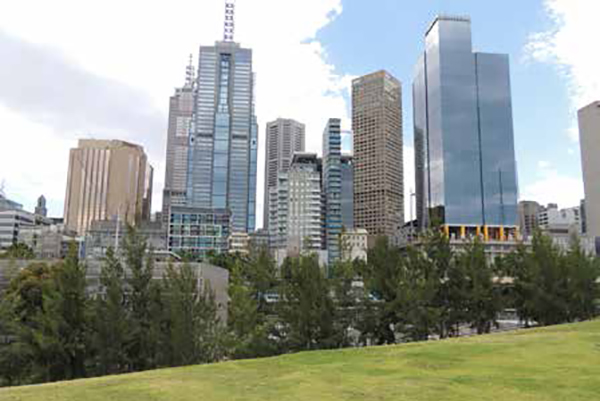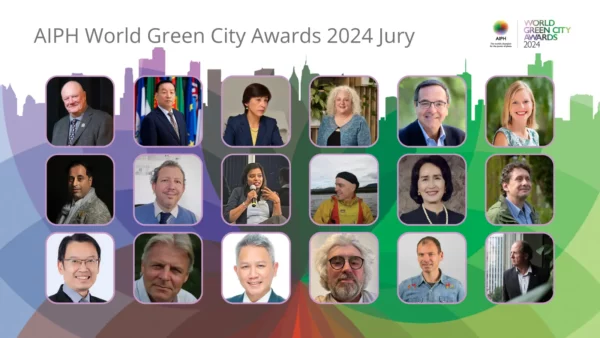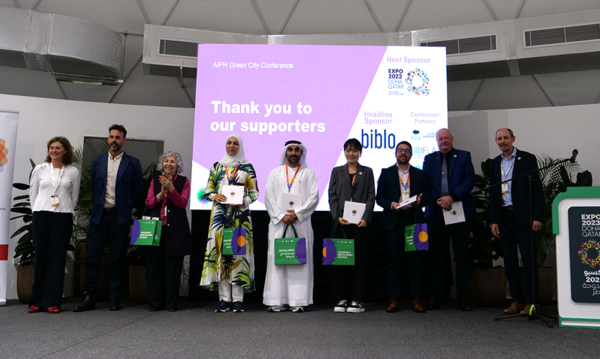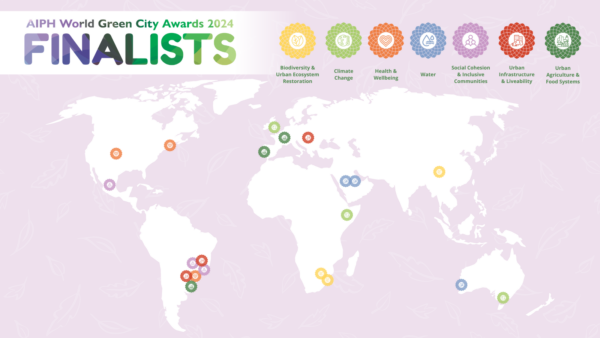At a time when nature around the world is being threatened, recognition of the value of nature in cities is probably at its highest.
Profiling city success stories and the innovations, policies and people that narrate these stories, the AIPH Green City conference 2021 has the theme “Champions of Green Cities”. The evidence behind the ways that nature makes cities liveable is no longer possible to ignore. The new digital resource, AIPH 2020 Green City Guidelines, collates this evidence and delivers it around 6 key areas: economy, health, climate and pollution, social interaction, ecology, and water. However, it does take decisive action and commitment to bring this into practice, and starts with a change in the way city planning is perceived.
“Streets form 80% of the public space of cities and I have often stated ‘If you design good streets you will design a good city’”, says Prof Rob Adams, keynote speaker at the conference on 22nd April, 2021. Rob, City Architect at the City of Melbourne is referring to Melbourne’s Urban Forest and Grey to Green strategies that have transformed the city. The city has responded to various shocks over the past four decades, changing patterns of city structure to adapt to shifting consumer habits, climate change, and Covid-19, and always bringing in more trees and more greenery. The change started in 1985, with a few small projects that widened footpaths, added bike lanes and open space, and increased tree plantings. When this was shown to lead to increased business in these areas, it became easier for the City Council to be more ambitious.
CITIES AROUND THE WORLD ARE ADAPTING
Also reconfiguring streets for improved city liveability, the case study of Barcelona describes how creating 503 superblocks that will eventually connect to one another will deliver over 160 hectares of new green space by 2030. The basic idea behind the superblocks plan is to take urban space that is currently devoted to one use (automobile traffic) and open it up to multiple uses (walking, cycling, playing, social interaction). A recent study carried out by the Barcelona Institute for Global Health estimated that the city could prevent 667 premature deaths every year if all 503 superblocks envisaged were indeed created.
The story of Barcelona illustrates that it is possible to reconfigure heritage cities and make them greener. Creating new green cities that balance the dynamics of access and nature is demonstrated in the Netherlands, with the new development of the City of Almere. The masterplan is based on a grid pattern that divides the site into 192 developable plots of 1,500 square meters surface area on average. Each plot incorporates a four-meter wide strip along its perimeter that is dedicated to plantings. This long-term, structural planting is referred to as the “Green City Arboretum” and is being designed as a plant collection.
Along with these case studies and other urban greening initiatives from cities around the world, The AIPH Green City Conference on 22nd April 2021 also sees the launch of the AIPH World Green City Awards 2022 which recognise and celebrate cities around the world that have made impressive progress in enhancing the ‘living green’ content of the city, providing evidence of how this makes the city more liveable and more resilient.



















